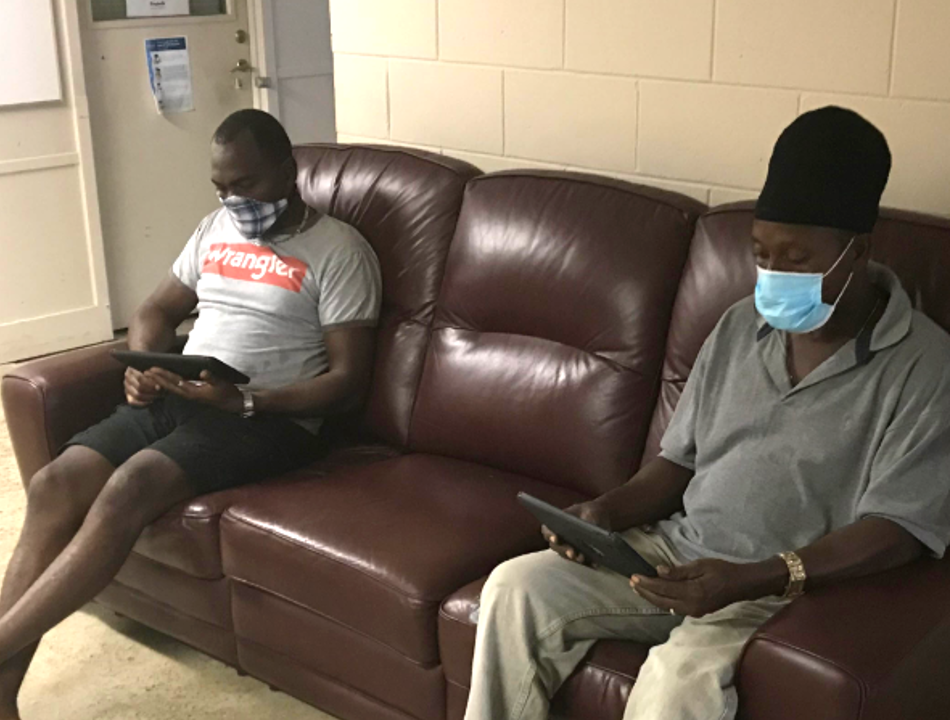Building a Better New Hire Experience – Even in a Pandemic

Recently, our new hire onboarding program was restructured to help improve retention while keeping employees safe, productive and engaged. Then COVID-19 happened, and we had to adjust again. And continue adjusting — it is an ongoing process.
A little bit about our company: The Bonduelle plant in Strathroy, Ontario, currently employs 150 people full time plus an additional 70 seasonal employees from June to December. Our seasonal workforce includes 58 temporary foreign workers.
Prior to the pandemic, we took a hard look at our onboarding process after receiving some candid employee feedback from new hires and decided to revamp it. We were checking the boxes, but our employee retention rate was not good — it was 35%. So, we tossed the “one and done” approach that consisted of providing new hires with a single, continuous, instructor-led, seven-hour class.
How Bonduelle Improved the Onboarding Process for New Hires
1. Establishing a longer onboarding time period. After some focused planning and preparation with the talent and development coordinator, we transitioned from a single day of onboarding to a two-week onboarding process. This new structure introduced a gradual ramp-up of working onsite rather than immediately immersing employees in full shifts. This, combined with providing a general overview of the company, a facility tour, a buddy-program, and time to complete paperwork allows new hires to absorb a ton of new information at a rate that allows it to really sink in.
2. Continuing on-the-job training for the next 90 days. By the end of their first week, employees start with 6-hour shifts and ramp up incrementally to full 12-hour shifts. The second week comprises 12-hour shifts during the day, with breaks for eLearning mixed in. Throughout the 90-day probationary period that follows, on-the-job training continues, and our talent and development coordinator checks in with them as well.
3. Providing returning seasonal supervisors with refresher courses. We’re very fortunate that most of our workers are returning and come back to us year after year. At the start of the processing season, supervisors join a group session and any new temporary foreign workers go through the same new hire training as new full-time hire.
These changes made a measurable impact, as Bonduelle-Strathroy’s employee retention rate went from 35% to 60% and was continuing an upward trend.
How Bonduelle Quickly Pivoted Hiring and Onboarding During a Pandemic
1. Recruit and hire virtually. With company and corporate restrictions in place that prohibited non-employees on site, everything went online. We had many voids to fill as an essential service to our community and to our customers. After sifting through 100 applications, we emailed applicants a video of the work environment and a company overview of what positions were available. About 20 candidates were interviewed over Zoom, and then emailed a job offer. When we received confirmation that the candidates were interested in being hired, we set them up with eLearning. And through this process, we were able to hire 15 employees without ever having them physically visit the site!
2. Onboard virtually. eLearning makes this much easier since employees can complete this prior to their first official day on site. We covered basic new employee information such as: which door to enter through, where to store lunches, basic food safety, and basic health safety. The new employees were paid for this training time after completing their first shift. We also leveraged the PlaybookTM mobile app, allowing returning seasonal employees who were quarantining to complete this basic onboarding using their own phones before their first day at the plant! We plan to continue a version this practice even after pandemic protocols are no longer necessary.
Outcome: Success!
Bonduelle has been able to retain 13 of the 15 people hired, and the two who didn’t stay we chose to release. This brings us to an 86% retention rate — a vast improvement.
Additional Tips for Successfully Managing Changes Wrought by a Pandemic
1. Optimize down time. The government regulation of a 14-day quarantine meant a lot of spare time for the temporary foreign workers that we were housing. We used this time by training a captain using the Playbook mobile app, who then managed onboarding within his group. We covered COVID guidelines, a company overview, health, and safety, and food safety.
2. Extend the onboarding experience to 90 days. Extending onboarding from one day to a two-week structure paid off. Building on that success, we plan to create a structured onboarding plan throughout the entire 90-day probationary period using Playbook to build some knowledge and complete competencies. We are also considering adjusting the probationary period to include incremental pay increases by Playbook qualification completion, rather than wait until after 90 days for a single increase. Now, if an employee was able to reach milestones quicker, their pay would increase quicker as well. This strategy also helps to engage our supervisors to become more involved in the onboarding of new employees.
3. Reuse learning plans for refresher training. For their annual training, supervisors manage learning plans using Alchemy Coach to assist in retaining the lessons of the learning plans.
Remember that Change Will Likely Continue
We’re in a new normal and we know that we need to minimize the risk at our site. And we’re not alone — all food processing and manufacturing facilities are in the same boat! One key to success? Recognizing that processes, protocols, and rules will have to continue to adapt to better fit the new needs of employees.
Did you miss the webinar and want to learn more tips? Not to worry, you can catch up online:






